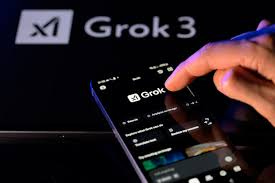AI-First Mobile: The Beginning of the End for Expensive Big Telcom Rate Plans?
By Tim McDonald - Synthetic Wisdom
For the past two decades, mobile services have revolved around a single device: the smartphone. But what if AI-first, voice-first devices disrupt that model? What if connectivity shifts from phone plans to AI-powered assistants running on wearables, smart glasses, and voice interfaces? And what if a challenger like Boost Mobile takes the lead in rethinking what mobile service means in an AI-first world?
We may be at the beginning of the end for smartphone-centric mobile plans—and AI-first mobile plans could be the future.
The Case for AI-First Mobile Plans
Today, traditional mobile carriers lock consumers into expensive post-paid plans that revolve around smartphones. These plans bundle voice, text, and data, reinforcing Apple and Google’s grip on the mobile experience. But if AI-first devices become mainstream, users won’t need a full smartphone plan—they’ll just need lightweight connectivity for AI assistants that handle messaging, calls, and tasks.
What Is an AI-First Plan?
An AI-first plan is a low-cost connectivity model optimized for AI-powered devices, rather than app-based smartphone usage. Instead of expensive unlimited data plans, users pay for AI-driven interactions, voice assistance, and lightweight messaging.
Core Features of an AI-First Plan:
Optimized for AI Assistants: Built for always-on AI interactions rather than web browsing or streaming.
Low-Cost Connectivity: Focused on voice, messaging, and AI requests rather than high-bandwidth data.
Seamless Across AI-First Devices: Works with smart glasses, smart earbuds, and voice-powered assistants.
Bundled with AI Services: AI-driven subscriptions (e.g., OpenAI, Alexa, Meta AI) could include AI-powered connectivity.
Why Boost Mobile Is Well-Positioned
Boost Mobile, owned by EchoStar, lacks a legacy post-paid business—making it an ideal challenger to break away from the smartphone-centric model. Unlike Verizon, AT&T, and T-Mobile, Boost isn’t trying to protect an entrenched smartphone ecosystem. It can experiment with new models of mobile service optimized for AI.
Boost could:
Offer AI-first plans tailored to OpenAI, Amazon, Meta, and other voice-driven AI platforms.
Bundle AI subscriptions with connectivity, creating a new type of mobile service.
Provide connectivity for smart glasses, earbuds, and AI-first devices that don’t need a full smartphone plan.
Potential AI-First Plan Tiers
Basic AI Plan ($5–$10/month): Text-based AI interactions, limited voice responses. Ideal for smart earbuds and AI-powered messaging devices.
Standard AI Voice Plan ($15–$20/month): Unlimited AI assistant access, voice responses, and moderate data usage. Designed for smart glasses and AI-enabled headphones.
Premium AI Plan ($25–$30/month): AI-powered calling, real-time language translation, and advanced AI features. Best for AI-first wearables and smart home hubs.
What AI-First Plans Enable
AI Assistants as Primary Communication Tools
Users could talk to AI assistants for messaging, calls, scheduling, and tasks—without needing a smartphone.
AI-Powered Translation & Augmentation
AI-powered wearables could offer real-time language translation, replacing traditional smartphone-based tools.
AI-First Messaging Services
Boost could launch a carrier-grade AI messaging platform, competing with iMessage, WhatsApp, and SMS.
New Partnerships with AI Giants
AI-first plans could be bundled with OpenAI, Amazon Alexa, Google Gemini, or Meta AI ecosystems, shifting mobile service away from traditional carriers.
Who Benefits from AI-First Mobile Plans?
1. Boost Mobile (EchoStar)
Becomes first-to-market with AI-optimized connectivity plans.
Attracts hardware partners (OpenAI, Amazon, Meta, etc.) looking for a non-traditional carrier partner.
Builds a recurring revenue model beyond traditional mobile services.
2. AI Device Makers (OpenAI, Amazon, Meta, etc.)
Get a carrier-agnostic network partner willing to support AI-first devices instead of smartphones.
Gain AI-first network infrastructure, optimized for voice and assistant-based interactions.
3. Consumers
Lower-cost AI-driven connectivity instead of expensive post-paid smartphone plans.
Seamless AI interactions without being tethered to a smartphone.
Final Thought: Could AI-First Mobile Plans Reshape the Wireless Industry?
If AI-first devices replace key smartphone functions, the entire mobile service model will change. Boost—or a new entrant—could lead the first major break from traditional smartphone-centric plans. AI-powered connectivity could disrupt post-paid carriers, reducing their control over hardware and mobile services.
We might see the emergence of new AI-first mobile networks that don’t operate like traditional telecom carriers.
So, is this the beginning of the end for smartphone-driven mobile plans?
Let me know what you think—would you subscribe to an AI-first plan if it meant you didn’t need a smartphone?

